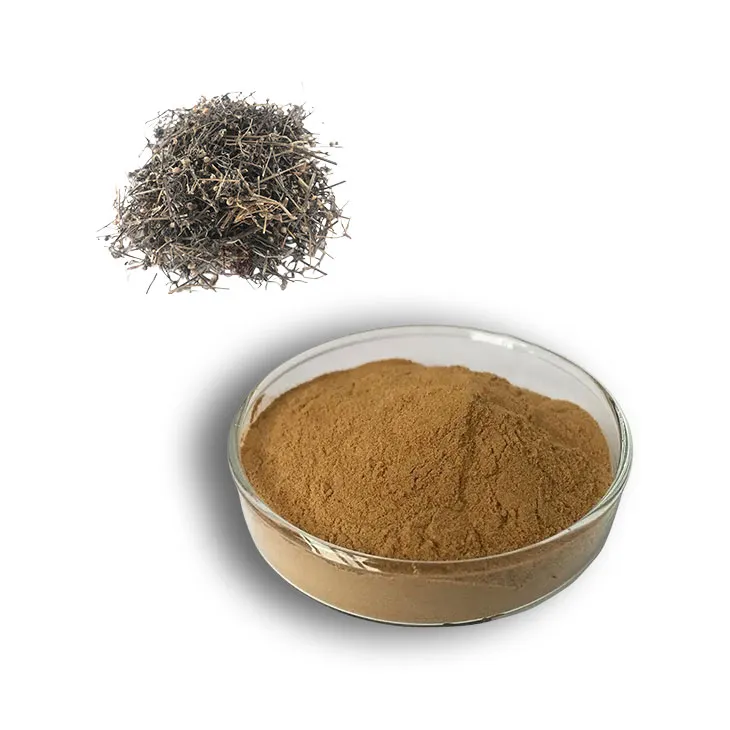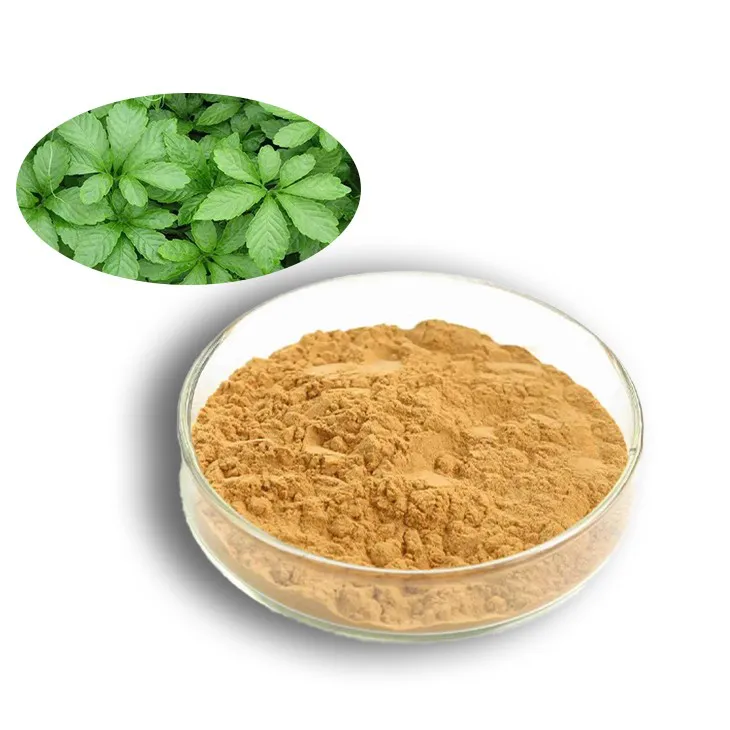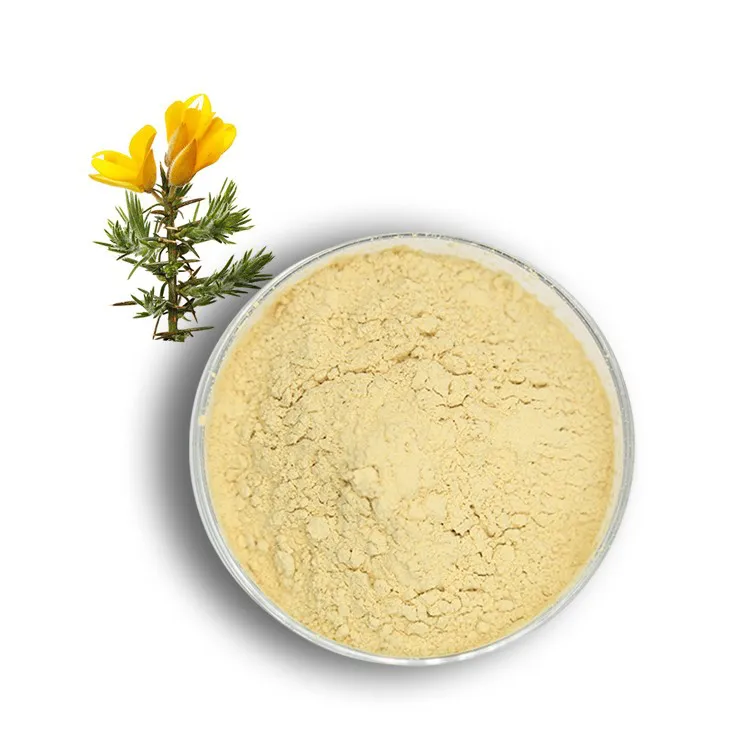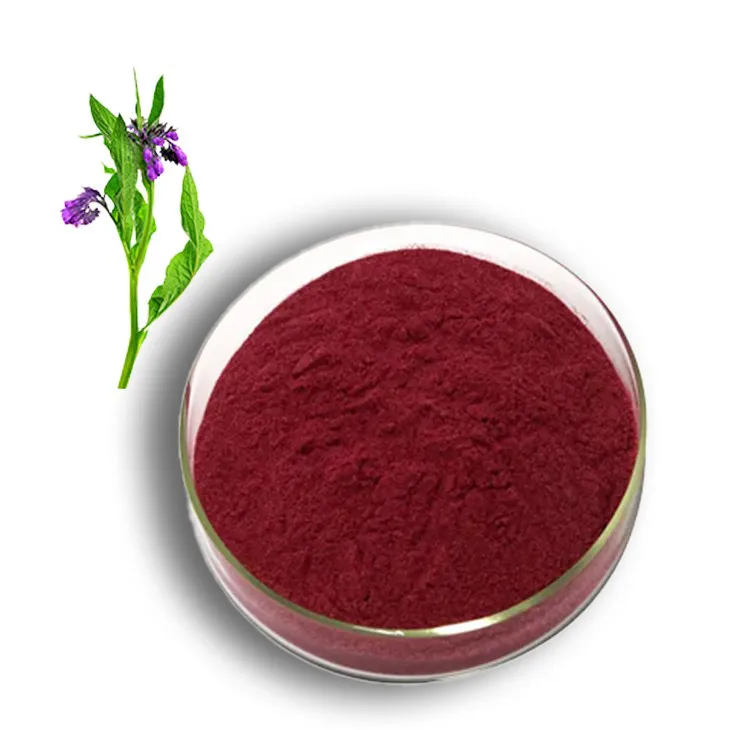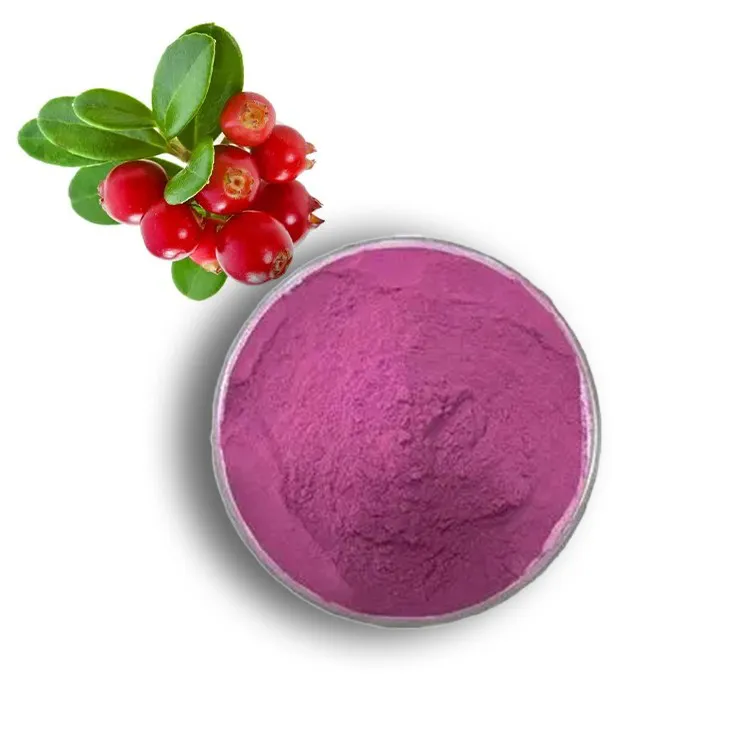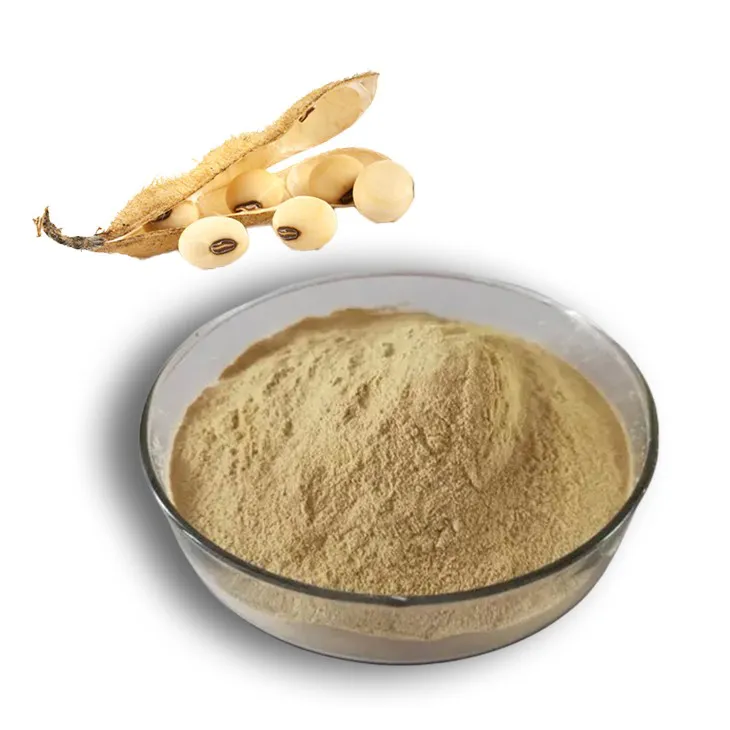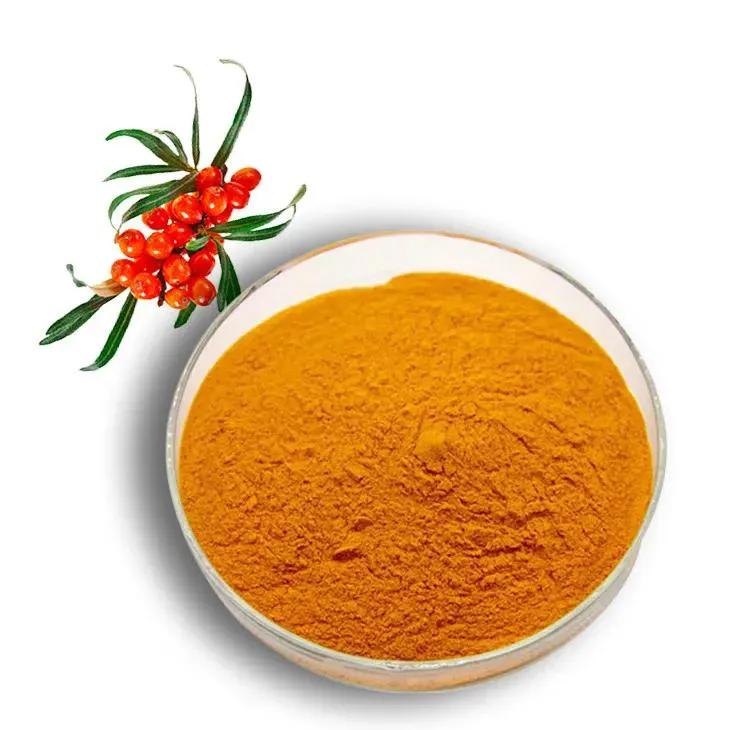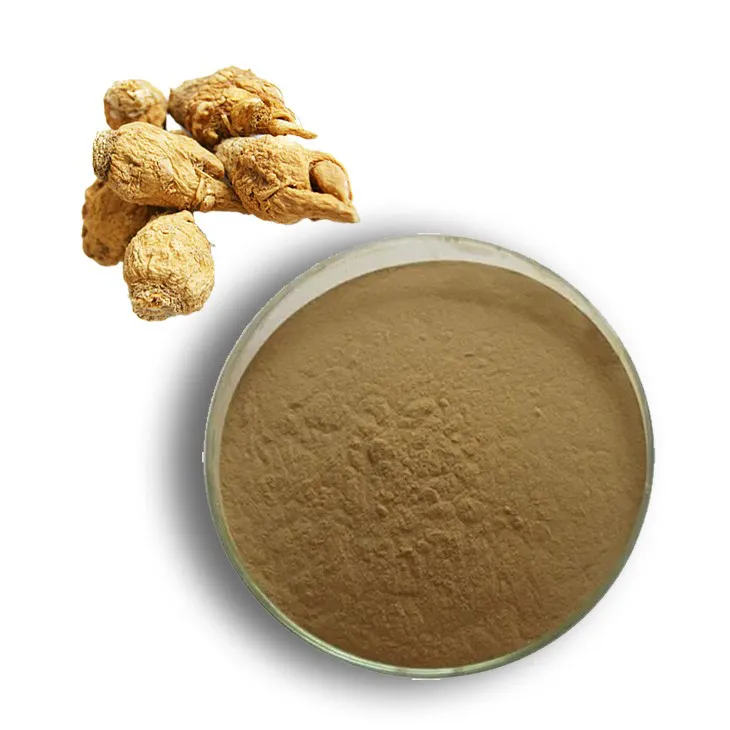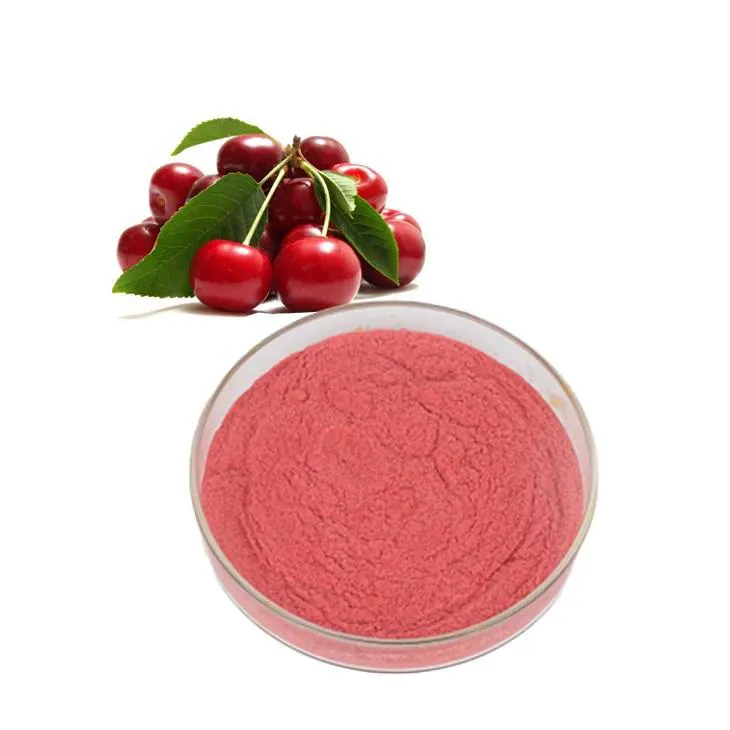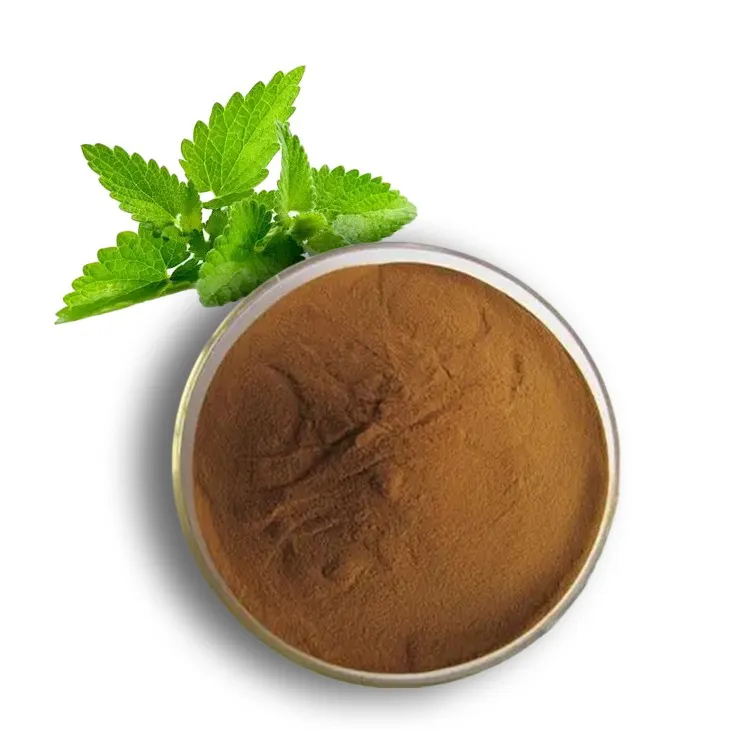- 0086-571-85302990
- sales@greenskybio.com
plant extraction techniques
2023-09-26
1. Historical Overview of Plant Extraction
1. Historical Overview of Plant Extraction
The historical overview of plant extraction is a rich tapestry woven with the threads of human civilization and the natural world. The use of plants for medicinal, culinary, and other purposes dates back to the earliest human societies, with evidence of plant extraction techniques being utilized for thousands of years.
Early humans discovered that certain plants had beneficial properties that could be harnessed for their well-being. The first plant extractions were rudimentary, involving the use of simple tools and techniques such as crushing, chewing, or soaking in water to release the active compounds within the plant material.
Ancient Civilizations
Ancient civilizations like the Egyptians, Greeks, and Romans had a profound knowledge of plant-based medicine. They used various methods to extract the medicinal properties of plants, including maceration, infusion, and decoction. The Ebers Papyrus, an Egyptian medical document dating back to 1550 BCE, contains numerous recipes for plant-based remedies.
Middle Ages
During the Middle Ages, the Islamic Golden Age saw significant advancements in the field of medicine and pharmacology. Scholars like Al-Razi and Ibn Sina (Avicenna) made important contributions to the understanding of plant extraction, developing more sophisticated methods and documenting their findings in comprehensive texts.
Renaissance
The Renaissance period brought about a renewed interest in the study of plants and their properties. European botanists and alchemists began to classify plants and document their medicinal uses more systematically. This period also saw the invention of the still, which allowed for the distillation of plant materials to produce essential oils and other concentrated extracts.
Colonial Era
The colonial era facilitated the exchange of plant knowledge between different cultures and continents. European colonizers brought back new plant species from their colonies, which were then studied and incorporated into local medicinal practices. This exchange led to the discovery of new extraction techniques and the expansion of the plant-based medicine repertoire.
Modern Times
The advent of modern science and technology has revolutionized the field of plant extraction. With the development of chromatography, spectroscopy, and other analytical techniques, scientists have been able to identify and isolate specific compounds within plants with greater precision. This has led to a deeper understanding of the mechanisms of action of plant extracts and their potential applications in various industries.
Throughout history, plant extraction techniques have evolved in response to changing needs, technological advancements, and cultural influences. As we delve into the types of plant extracts and the modern methods of extraction, it is essential to appreciate the rich historical context that has shaped this field and continues to inspire innovation and discovery.
2. Types of Plant Extracts
2. Types of Plant Extracts
Plant extracts are derived from various parts of plants, including leaves, roots, stems, flowers, and fruits. They are used for a wide range of applications, from pharmaceuticals to cosmetics, and are valued for their bioactive compounds. Here are some common types of plant extracts:
1. Essential Oils: These are volatile oils extracted from plant materials, often through steam distillation or cold pressing. They are highly concentrated and are used in aromatherapy, perfumery, and as flavorings.
2. Tinctures: Tinctures are made by soaking plant parts in alcohol and water. They are used in herbal medicine for their therapeutic properties and can be ingested or applied topically.
3. Infusion: An infusion is created by steeping plant material in hot water. This method is commonly used for making herbal teas and extracting milder compounds.
4. Decoction: Decoctions are made by boiling plant parts, typically roots, bark, or seeds, in water. This method is used to extract more robust compounds that are not easily soluble in cold water.
5. Extracts: These are concentrated forms of plant material, often in the form of powders, granules, or liquid concentrates. They are made by extracting the active components from the plant using solvents like water, alcohol, or other organic solvents.
6. Resins: Resins are sticky substances extracted from plants, often from the sap. They can be used in various applications, including as a base for incense or in the production of certain types of varnish.
7. Gums: Plant gums are a type of polysaccharide that is extracted from certain plants. They are used in the food industry as thickeners and stabilizers.
8. Pomades and Balms: These are semi-solid preparations made from plant oils and waxes, often used for topical applications such as skin care or hair care.
9. Dried Powders: These are the result of grinding dried plant parts into a fine powder. They are used in a variety of applications, including dietary supplements and cosmetics.
10. Supercritical Fluid Extracts: This modern method uses supercritical CO2 to extract compounds from plants. The resulting extracts are highly pure and retain the original properties of the plant compounds.
Each type of plant extract has its unique properties and applications, and the choice of extraction method can significantly affect the quality and composition of the final product. Understanding the different types of plant extracts is crucial for their effective and safe use in various industries.
3. Modern Extraction Methods
3. Modern Extraction Methods
In the contemporary era, the science of plant extraction has evolved significantly, embracing advanced technologies and methodologies to enhance efficiency, yield, and purity. Modern extraction methods have revolutionized the way we harness the therapeutic and aromatic properties of plants, and they can be broadly categorized into physical, chemical, and hybrid techniques.
Physical Extraction Methods:
1. Cold Pressing: This traditional method involves mechanically pressing plant materials, particularly seeds and fruits, at low temperatures to extract oils. It preserves the natural constituents without the use of heat or solvents.
2. Distillation: A process where heat is applied to plant materials to vaporize the volatile compounds, which are then condensed back into liquid form. Steam distillation is a common variant used for extracting essential oils.
3. Supercritical Fluid Extraction (SFE): Utilizes supercritical fluids, typically carbon dioxide, which can penetrate plant material and selectively extract compounds. It's known for its high efficiency and the ability to preserve heat-sensitive compounds.
4. Ultrasonic Extraction: This technique uses ultrasonic waves to disrupt plant cell walls, releasing the desired compounds into a solvent. It's a rapid and efficient method that can be scaled up for industrial applications.
5. Microwave-Assisted Extraction (MAE): Leverages microwave energy to heat solvents, accelerating the extraction process and improving the solubility of target compounds.
Chemical Extraction Methods:
1. Solvent Extraction: Involves the use of solvents like hexane, ethanol, or water to dissolve and extract plant compounds. The choice of solvent depends on the polarity of the desired compounds.
2. Enzymatic Extraction: Uses enzymes to break down plant cell walls and release bioactive compounds. This method is particularly useful for extracting proteins and carbohydrates.
3. Aqueous Extraction: A simple and eco-friendly method where water is used to extract water-soluble compounds from plant materials.
Hybrid Extraction Methods:
1. Pressurized Liquid Extraction (PLE): Combines high temperature and pressure to extract compounds more efficiently than traditional solvent extraction.
2. Microwave-Enhanced Gravity Filtration (MEGF): Integrates microwave heating with gravity filtration to improve the extraction and filtration process.
3. Accelerated Solvent Extraction (ASE): Uses high pressure and temperature to speed up the solvent extraction process, reducing solvent use and extraction time.
Innovative Technologies:
1. Nanofiltration: Employs nanotechnology to filter and concentrate plant extracts, improving purity and yield.
2. Molecular Imprinting: Creates artificial receptors that selectively bind to target compounds, aiding in the purification process.
3. Biomimetic Extraction: Mimics natural biological processes to extract compounds, offering a more sustainable and efficient approach.
Modern extraction methods have significantly advanced the quality and variety of plant extracts available for various applications. However, the choice of method often depends on the specific properties of the plant material, the target compounds, and the intended application. As technology continues to progress, we can expect further innovations that will enhance the efficiency, sustainability, and scalability of plant extraction techniques.
4. Applications of Plant Extracts
4. Applications of Plant Extracts
Plant extracts have a wide range of applications across various industries due to their diverse chemical compositions and biological activities. Here are some of the key areas where plant extracts are utilized:
Pharmaceutical Industry:
Plant extracts are used in the development of new drugs and traditional medicines. They serve as a rich source of bioactive compounds that can be isolated and used for treating various ailments. Many modern medicines are derived from plant sources, such as aspirin from willow bark and morphine from the opium poppy.
Cosmetics and Personal Care:
Plant extracts are incorporated into skincare products, hair care products, and cosmetics for their antioxidant, anti-inflammatory, and soothing properties. They are valued for their natural fragrances and colors, as well as their potential to improve skin health and appearance.
Food and Beverage Industry:
Flavors, colors, and preservatives derived from plants are used in the food industry. Plant extracts can enhance the taste and appearance of food products, and some also have antimicrobial properties that help extend shelf life.
Agriculture:
Plant extracts are used as natural pesticides and fertilizers in organic farming. They can help control pests and diseases in crops without the use of synthetic chemicals, promoting sustainable agriculture.
Nutraceuticals and Dietary Supplements:
Plant extracts are used in the formulation of nutraceuticals and dietary supplements to provide health benefits beyond basic nutrition. They are often marketed for their antioxidant, anti-inflammatory, or immune-boosting properties.
Perfumery and Fragrance Industry:
The essential oils and aromatic compounds found in plant extracts are used in perfumes, colognes, and other fragrances. They provide natural scents that are preferred by many consumers over synthetic alternatives.
Textile Industry:
Plant extracts are used in the dyeing and finishing processes of textiles. Natural dyes derived from plants can give textiles unique colors and are often sought after for their eco-friendly properties.
Ornamental and Horticulture:
Plant extracts are used in the cultivation of ornamental plants and in horticulture for their growth-promoting properties. They can enhance plant growth, improve resistance to diseases, and increase the overall health of plants.
Environmental Remediation:
Plant extracts can be used to remediate contaminated environments. Certain plants have the ability to absorb or break down pollutants, and their extracts can be used to clean up soil and water.
Research and Development:
Plant extracts are extensively used in scientific research to study their chemical properties and potential health benefits. They are a valuable resource for discovering new bioactive compounds and understanding their mechanisms of action.
The applications of plant extracts are vast and continue to grow as new properties and benefits are discovered. As consumers increasingly seek natural and sustainable products, the demand for plant extracts in various industries is expected to rise.
5. Advantages and Limitations of Plant Extraction Techniques
5. Advantages and Limitations of Plant Extraction Techniques
Plant extraction techniques have been a cornerstone of traditional medicine and continue to play a significant role in modern pharmaceuticals, cosmetics, and food industries. However, like any process, they come with their own set of advantages and limitations.
Advantages:
1. Natural Origin: Plant extracts are derived from natural sources, which are often preferred by consumers due to their perceived safety and eco-friendliness.
2. Diversity of Compounds: Plants contain a wide array of bioactive compounds, offering a rich source of potential therapeutic agents and functional ingredients.
3. Renewable Resource: As plants are renewable, plant extraction provides a sustainable alternative to synthetic chemicals.
4. Specificity of Action: Many plant extracts have specific actions on biological systems, which can be beneficial in targeted treatments.
5. Cost-Effectiveness: In some cases, plant extraction can be more cost-effective than synthetic production, especially when the plant material is abundant and easily accessible.
6. Traditional Knowledge: The use of plant extracts is deeply rooted in traditional knowledge systems, providing a wealth of experience and wisdom to draw upon.
Limitations:
1. Consistency and Standardization: One of the main challenges with plant extracts is ensuring consistency in quality and composition, which is essential for efficacy and safety.
2. Contamination Risks: Plant materials can be contaminated with pesticides, heavy metals, or other harmful substances, which need to be carefully controlled.
3. Variable Yields: The yield of bioactive compounds can vary depending on factors such as plant species, growing conditions, and harvesting time.
4. Complex Extraction Processes: Some plant compounds are difficult to extract due to their chemical properties or the structure of the plant matrix.
5. Scalability Issues: Scaling up extraction processes from laboratory to industrial levels can be challenging and may require significant modifications to the process.
6. Environmental Impact: While plants are renewable, the cultivation and processing of plants can have environmental impacts, including land use, water consumption, and the use of agrochemicals.
7. Regulatory Challenges: The regulatory landscape for plant extracts can be complex, with different requirements across regions and applications.
In conclusion, while plant extraction techniques offer numerous benefits, they also present challenges that need to be addressed to ensure the safety, efficacy, and sustainability of the products derived from these natural sources. Ongoing research and innovation are crucial to overcoming these limitations and harnessing the full potential of plant extracts.
6. Quality Control and Standardization of Plant Extracts
6. Quality Control and Standardization of Plant Extracts
Quality control and standardization are critical aspects of plant extraction techniques, ensuring the safety, efficacy, and consistency of plant-based products. These processes are essential for maintaining consumer trust and meeting regulatory requirements.
6.1 Importance of Quality Control
Quality control in plant extraction involves a series of tests and checks to ensure that the final product meets the desired specifications. This includes:
- Purity Testing: Ensuring that the extract is free from contaminants such as heavy metals, pesticides, and microbial pathogens.
- Potency Testing: Measuring the concentration of active compounds to ensure the product's effectiveness.
- Stability Testing: Assessing the product's shelf life and resistance to degradation over time.
6.2 Standardization of Plant Extracts
Standardization is the process of ensuring that a plant extract contains a consistent amount of one or more active ingredients. This is achieved through:
- Quantitative Analysis: Using analytical techniques such as high-performance liquid chromatography (HPLC) to determine the concentration of specific compounds.
- Batch-to-Batch Consistency: Implementing strict manufacturing processes to ensure that each batch of the extract has a similar composition.
- Certification of Origin: Documenting the geographical origin of the plant material to ensure traceability and authenticity.
6.3 Regulatory Compliance
Plant extracts must comply with various regulations depending on their intended use and the region in which they are sold. This includes:
- Good Manufacturing Practices (GMP): Adhering to guidelines that ensure the quality and safety of the product throughout the manufacturing process.
- Pharmacopoeial Standards: Meeting the standards set by pharmacopeias, which are authoritative guides for the identity, quality, and purity of medicinal substances.
- Food and Drug Administration (FDA) Regulations: Complying with the regulations set by the FDA or equivalent bodies in other countries for food, dietary supplements, and pharmaceuticals.
6.4 Challenges in Quality Control and Standardization
Despite the importance of quality control and standardization, there are several challenges that need to be addressed:
- Variability in Plant Material: The natural variability in plants can affect the composition of the extracts, making it difficult to achieve consistent results.
- Complexity of Extraction Processes: The complexity of plant matrices and the diversity of compounds present can make it challenging to develop standardized extraction methods.
- Technological Limitations: The availability and accuracy of analytical techniques can limit the ability to precisely measure and control the composition of plant extracts.
6.5 Future Directions in Quality Control
To overcome these challenges and improve quality control, future directions may include:
- Advanced Analytical Techniques: The development and application of more sophisticated analytical methods to better characterize plant extracts.
- Artificial Intelligence and Machine Learning: Utilizing AI and ML to predict and control the quality of plant extracts based on data from various sources.
- Sustainability and Ethical Sourcing: Ensuring that quality control processes also consider the environmental and social impacts of plant extraction.
6.6 Conclusion
Quality control and standardization are vital for the production of reliable and safe plant extracts. As the demand for plant-based products continues to grow, it is essential to invest in research and development to improve these processes and meet the evolving needs of consumers and regulatory bodies.
7. Future Trends and Innovations in Plant Extraction
7. Future Trends and Innovations in Plant Extraction
As the demand for natural products and sustainable practices continues to rise, the field of plant extraction is poised for significant advancements and innovations. Here are some of the future trends and innovations that are expected to shape the industry:
7.1 Advanced Extraction Technologies
The development of cutting-edge extraction technologies will continue to be a major focus. These technologies aim to improve efficiency, reduce environmental impact, and enhance the quality of plant extracts. Examples include:
- Supercritical Fluid Extraction (SFE): Utilizing supercritical fluids, such as carbon dioxide, to extract compounds at high pressures and temperatures, which can yield a purer and more potent product.
- Ultrasonic-Assisted Extraction (UAE): Using ultrasonic waves to break cell walls and enhance the release of bioactive compounds, which can be more efficient and environmentally friendly.
- Microwave-Assisted Extraction (MAE): Employing microwave energy to accelerate the extraction process, which can be faster and more energy-efficient.
7.2 Green Chemistry and Sustainability
The integration of green chemistry principles into plant extraction processes will be a key trend. This includes:
- Minimizing Waste: Developing methods that produce less waste or that can recycle byproducts into useful materials.
- Energy Efficiency: Optimizing processes to consume less energy, reducing the carbon footprint of plant extraction.
- Bio-based Solvents: Replacing traditional solvents with bio-based alternatives that are less toxic and more biodegradable.
7.3 Personalized Medicine and Precision Extraction
As personalized medicine becomes more prevalent, so too will the need for customized plant extracts tailored to individual health needs. This may involve:
- Genetically Modified Plants: Engineering plants to produce higher levels of specific beneficial compounds.
- Precision Agriculture: Utilizing data-driven farming techniques to optimize plant growth for extraction purposes.
7.4 Nanotechnology in Plant Extraction
The application of nanotechnology in plant extraction can lead to more targeted and efficient processes. This includes:
- Nanoencapsulation: Encapsulating plant extracts in nanoparticles to improve their stability, bioavailability, and targeted delivery.
- Nanofiltration: Using nanoscale filters to separate and purify plant compounds with high precision.
7.5 Artificial Intelligence and Data Analytics
The use of AI and data analytics will revolutionize plant extraction by:
- Predictive Modeling: Creating models to predict the best extraction conditions for specific plant compounds.
- Process Optimization: Utilizing machine learning algorithms to optimize extraction parameters in real-time.
7.6 Bioprospecting and Biodiversity
The exploration of new plant species and their potential for novel bioactive compounds will be a growing area of research. This includes:
- Exploring Remote Ecosystems: Investigating plants from untouched regions that may harbor undiscovered medicinal properties.
- Conservation Efforts: Ensuring that bioprospecting activities are conducted sustainably and ethically.
7.7 Regulatory Advancements
As the plant extraction industry evolves, so too will the regulatory landscape. This will involve:
- Harmonization of Standards: Developing international standards for the quality and safety of plant extracts.
- Traceability and Transparency: Implementing systems to track plant extracts from source to consumer, ensuring ethical and sustainable practices.
7.8 Consumer Education and Awareness
Educating consumers about the benefits and proper use of plant extracts will be crucial for the industry's growth. This includes:
- Transparency in Labeling: Providing clear information on product labels about the source, extraction method, and potential benefits of plant extracts.
- Public Outreach: Engaging with consumers through educational campaigns and social media to raise awareness about the value of plant-based products.
The future of plant extraction is bright, with innovations set to enhance the quality, efficiency, and sustainability of the industry. As research and technology continue to advance, the potential applications of plant extracts will expand, offering a wealth of opportunities for both human health and environmental conservation.
8. Ethical and Environmental Considerations
8. Ethical and Environmental Considerations
The extraction of plant materials for various applications is not without its ethical and environmental implications. As the demand for natural products increases, it is crucial to consider the sustainability and ecological impact of these practices. This section will delve into the key ethical and environmental considerations associated with plant extraction techniques.
Sustainable Sourcing
One of the primary ethical concerns is the sustainable sourcing of plant materials. Overharvesting can lead to the depletion of natural resources and disrupt ecosystems. It is essential to ensure that plant extraction practices do not compromise the long-term availability of these resources. This involves promoting the use of renewable resources, encouraging cultivation over wild harvesting, and supporting fair trade practices that benefit local communities.
Biodiversity Conservation
Plant extraction should be conducted in a manner that preserves biodiversity. The indiscriminate collection of plants can lead to the loss of species and genetic diversity, which is vital for maintaining the resilience of ecosystems. Efforts should be made to identify and protect areas rich in biodiversity and to implement practices that minimize the impact on habitats and species.
Chemical Use and Waste Management
The use of chemicals in extraction processes can have adverse environmental effects. It is important to minimize the use of harmful chemicals and to adopt green chemistry principles that focus on reducing waste and pollution. Additionally, proper waste management practices must be in place to prevent contamination of soil, water, and air.
Climate Change Impact
The production and transportation of plant extracts contribute to greenhouse gas emissions, which exacerbate climate change. Efforts should be made to reduce the carbon footprint of plant extraction processes, such as by using energy-efficient technologies and promoting local sourcing to reduce transportation distances.
Animal Welfare
In some cases, plant extraction processes may involve the use of animals, either directly or indirectly. It is important to ensure that animal welfare is respected and that practices are humane and comply with ethical guidelines.
Regulatory Compliance and Certifications
Adhering to international and regional regulations and obtaining relevant certifications can help ensure that plant extraction practices are ethical and environmentally friendly. Certifications such as FairWild, Forest Stewardship Council (FSC), and others can provide assurance to consumers and stakeholders that the products are sourced responsibly.
Community Engagement and Benefit Sharing
Engaging with local communities and ensuring that they benefit from plant extraction activities is crucial. This includes providing fair wages, supporting community development, and sharing the benefits of the industry with those who contribute to the supply chain.
Consumer Awareness and Demand
Consumers play a significant role in driving the demand for ethical and environmentally friendly plant extracts. By choosing products that are sustainably sourced and produced, consumers can influence the market and encourage the adoption of responsible practices.
In conclusion, ethical and environmental considerations are integral to the plant extraction industry. By addressing these concerns, the industry can ensure that its practices are sustainable, responsible, and contribute positively to the environment and society. As the demand for natural products continues to grow, it is essential to prioritize these considerations to safeguard our planet and its resources for future generations.
9. Conclusion and Perspectives
9. Conclusion and Perspectives
In conclusion, plant extraction techniques have evolved significantly from ancient practices to modern, sophisticated methods, reflecting the continuous quest for efficiency, purity, and sustainability. The historical overview has shown us the roots of our current methods, which have been refined over centuries to cater to the growing demand for natural products in various industries.
The diversity of plant extracts, ranging from essential oils to resins and pigments, underscores the versatility of plants as a source of bioactive compounds. Modern extraction methods, such as supercritical fluid extraction and ultrasound-assisted extraction, have improved the quality and yield of these extracts, making them more accessible and economically viable for commercial use.
The applications of plant extracts are vast, spanning from pharmaceuticals and cosmetics to food and beverages, and even agricultural products. Their use in these sectors highlights the importance of plant extracts in contributing to healthier and more sustainable products.
However, the advantages and limitations of plant extraction techniques must be carefully considered. While they offer a natural alternative to synthetic compounds, challenges such as scalability, standardization, and environmental impact need to be addressed to ensure the long-term viability of these methods.
Quality control and standardization are critical to ensure the safety, efficacy, and consistency of plant extracts. The development of analytical techniques and quality assurance protocols is essential to maintain the integrity of these products and build consumer trust.
Looking to the future, trends and innovations in plant extraction are likely to focus on improving efficiency, reducing environmental impact, and exploring new sources of bioactive compounds. The integration of technology, such as nanotechnology and artificial intelligence, may offer new opportunities for enhancing extraction processes and discovering novel applications for plant extracts.
Ethical and environmental considerations will continue to play a significant role in shaping the future of plant extraction. Sustainable sourcing, fair trade practices, and minimizing the ecological footprint of extraction processes will be essential to ensure the responsible use of plant resources.
In conclusion, the field of plant extraction techniques is dynamic and constantly evolving. As we move forward, it is crucial to balance the benefits of these natural products with the need for responsible and sustainable practices. By embracing innovation, fostering collaboration, and prioritizing ethical considerations, we can unlock the full potential of plant extracts and contribute to a healthier and more sustainable world.
- ▶ Hesperidin
- ▶ citrus bioflavonoids
- ▶ plant extract
- ▶ lycopene
- ▶ Diosmin
- ▶ Grape seed extract
- ▶ Sea buckthorn Juice Powder
- ▶ Beetroot powder
- ▶ Hops Extract
- ▶ Artichoke Extract
- ▶ Reishi mushroom extract
- ▶ Astaxanthin
- ▶ Green Tea Extract
- ▶ Curcumin Extract
- ▶ Horse Chestnut Extract
- ▶ Other Problems
- ▶ Boswellia Serrata Extract
- ▶ Resveratrol Extract
- ▶ Marigold Extract
- ▶ Grape Leaf Extract
- ▶ blog3
- ▶ Aminolevulinic acid
- ▶ Cranberry Extract
- ▶ Red Yeast Rice
- ▶ Red Wine Extract
-
Hedyotis Diffusa Extract
2023-09-26
-
Gynostemma pentaphyllum extract
2023-09-26
-
Genistein
2023-09-26
-
Shikone Extract
2023-09-26
-
Europen Bilberry Extract
2023-09-26
-
Soy Extract
2023-09-26
-
Sea buckthorn Juice Powder
2023-09-26
-
Maca Extract
2023-09-26
-
Acerola Juice Powder
2023-09-26
-
Peppermint Extract Powder
2023-09-26











